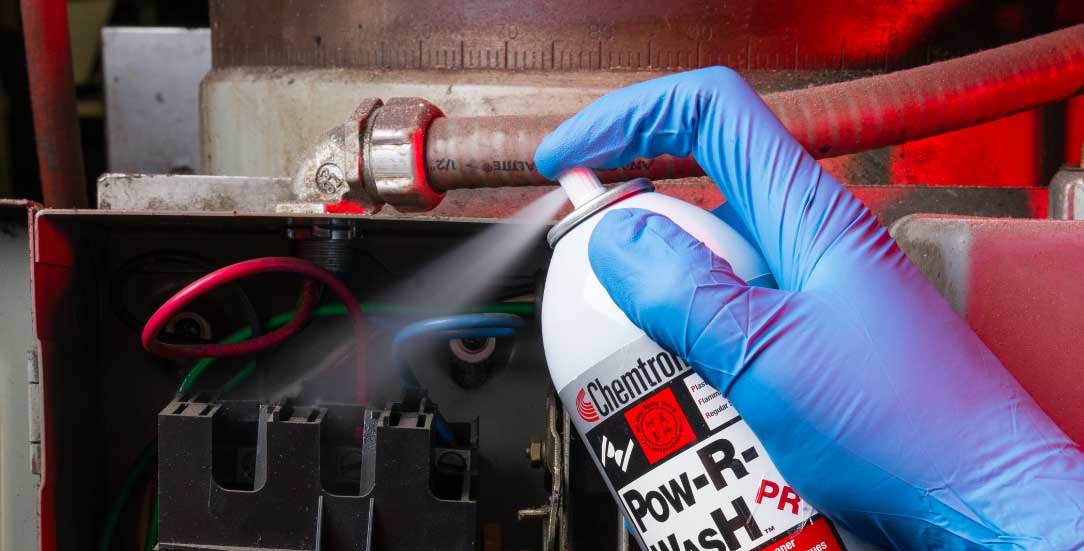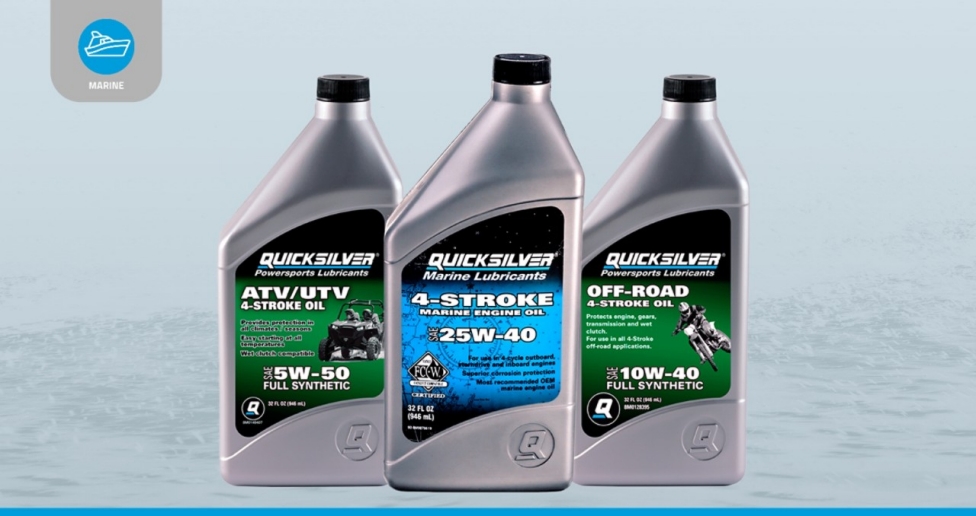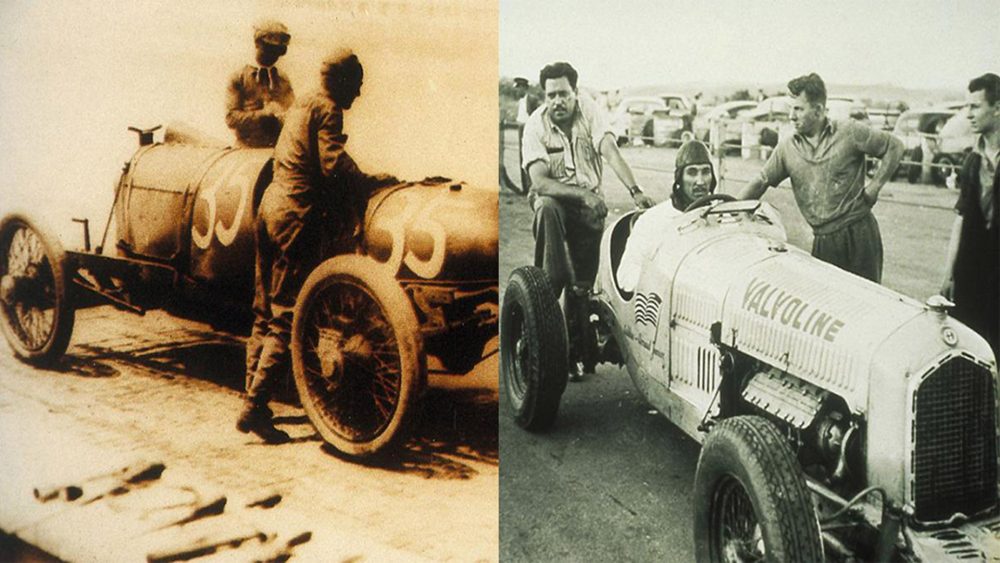To remove oil and grease from the engine, start by using a plastic scraper and spray-on degreasers. Avoid using a pressure washer to prevent damage and spreading grease.
Commercial degreasers are effective in cleaning engine parts thoroughly and safely. It’s essential to approach engine cleaning carefully to maintain its functionality and appearance. Proper maintenance not only extends the lifespan of the engine but also enhances its performance. By following the right techniques and using suitable products, you can keep your engine free from oil and grease buildup, ensuring efficient operation and longevity.
Regular cleaning also allows for early detection of any issues that may arise, preventing costly repairs in the long run.
Read More: Difference Between Motor Oil and Grease And What Happens if You Mix Oil and Grease?

Credit: www.chemtronics.com
Choosing The Right Products
When it comes to removing oil and grease from your engine, selecting the right products is crucial for an effective and efficient cleaning process. By choosing the best engine degreaser and utilizing the essential tools for engine degreasing, you can ensure that your engine is free from dirt, grime, and buildup.
Selecting The Best Engine Degreaser
- Look for a powerful degreaser specifically formulated for engines.
- Ensure it is safe for use on various engine components.
- Opt for a biodegradable degreaser to minimize environmental impact.
- Choose a foaming degreaser for better coverage and penetration.
Essential Tools for Engine Degreasing
- Plastic scraper for removing stubborn grease.
- Soft-bristled brush for scrubbing hard-to-reach areas.
- Microfiber towels are for wiping down surfaces after degreasing.
- Gloves and eye protection to ensure safety during the cleaning process.

Credit: www.machinerylubrication.com
Preparation Steps
To remove oil and grease from the engine, start by using a plastic scraper and spray-on degreasers. Avoid using a pressure washer to prevent damage. Opt for a commercial degreasing agent for effective results.
Removing Engine Covers
To prepare for removing oil and grease from your engine, it is important to first remove the engine covers. These covers protect the engine from dust and debris, but they can also accumulate oil and grease over time. Removing the engine covers will give you better access to clean the engine thoroughly. Here is a step-by-step guide on how to remove engine covers:
- Start by locating the fasteners or clips that hold the engine covers in place. These can vary depending on the make and model of your vehicle.
- Once you have identified the fasteners, use the appropriate tool, such as a screwdriver or wrench, to loosen and remove them.
- Gently lift the engine covers to release them from any clips that may be holding them in place.
- Set the engine covers aside in a safe location.
Ensuring Engine Safety Precautions
Before you begin cleaning the engine, it is crucial to take the necessary safety precautions. The engine is a complex and delicate component of your vehicle and mishandling it can result in damage or injury. Follow these safety guidelines to ensure your engine remains protected:
- Always wear gloves and eye protection when working with any cleaning agents or tools.
- Make sure the engine is cool before attempting to clean it. Working on a hot engine can cause burns.
- Disconnect the battery to prevent any electrical mishaps while cleaning.
- Cover sensitive components of the engine, such as the alternator and air intake, with plastic bags or aluminum foil to shield them from water or cleaning agents.
Remember, safety should always be a top priority when working on any automotive maintenance tasks, and cleaning your engine is no exception. Following these safety precautions will help protect you and your vehicle from any potential harm. Now that you have prepared your engine by removing the covers and ensuring safety precautions, you are ready to move on to the next steps of removing oil and grease. Remember to proceed with caution and take your time to ensure a thorough and successful cleaning process.
Manual Cleaning Techniques
When it comes to removing oil and grease from your engine, manual cleaning techniques can be highly effective. These techniques allow you to target specific areas and ensure a thorough clean. Here are two commonly used manual cleaning techniques:
Using Degreasing Agents and Scrapers
One of the simplest and most effective ways to remove oil and grease from your engine is by using degreasing agents and a scraper. Start by applying a suitable engine degreaser onto the greasy areas. Allow the degreaser to sit for a few minutes to break down the grease. Then, using a plastic scraper, gently scrape off the loosened dirt and grease. Be careful not to apply too much pressure to avoid causing any damage to the engine surfaces. Repeat this process as needed until all the oil and grease are removed.
Rinsing And Drying the Engine Bay
Once you have removed the oil and grease using degreasing agents and a scraper, it’s important to rinse and dry the engine bay properly. Begin by rinsing the engine bay with a moderate stream of water. Use a hose or a pressure washer on a low setting to avoid any potential damage. Make sure to rinse away all traces of degreaser and any remaining grease. After rinsing, allow the engine bay to air dry or use an air compressor to blow out any trapped water. This will prevent any moisture from causing rust or corrosion.
By following these manual cleaning techniques, you can effectively remove oil and grease from your engine, ensuring it stays clean and properly functioning. Remember to always use appropriate safety precautions when working with degreasing agents and avoid excessive pressure when scraping or rinsing to protect the engine components.
Advanced Techniques
When dealing with tough oil and grease stains on your engine, utilizing advanced techniques can make the cleaning process more effective. Here are some advanced methods to consider:
Utilizing Air Compressor for Drying
- Compressed air can effectively dry out the engine bay after cleaning.
- Blow out trapped water and moisture from hard-to-reach areas.
- Prevent rust and corrosion by ensuring thorough drying.
Restoring The Aesthetic Look of Engine Bay
- Enhance the visual appeal of your engine bay by restoring its shine.
- Use quality engine dressings to give the components a clean and glossy finish.
- Protect the surfaces from dirt and grime with a durable protective coating.
Dealing With Excess Oil
To remove excess oil and grease from the engine, start with a plastic scraper and spray-on degreasers, avoiding the use of a pressure washer to prevent potential damage. Locating the oil plug at the bottom of the oil pan and using a plastic oil pan to catch the overfilled oil will help drain the excess oil properly.
Apply a suitable engine degreaser to the entire engine block and agitate the surface with a brush or scrubbing pad to dissolve grease and oil, followed by a thorough rinse with water.
Dealing with Excess Oil H3 Heading: Draining Excess Oil Safely When it comes to removing oil and grease from an engine, dealing with excess oil is a common challenge that many mechanics and car enthusiasts face. Whether it’s due to an overfill or a leak, having too much oil in the engine can lead to a range of issues, including reduced performance, overheating, and even engine damage. In this section, we will explore the best practices for safely draining excess oil from an engine. To safely drain excess oil from the engine, the first step is to locate the oil pan. At the bottom of the oil pan, you will find a large bolt known as the oil plug. It is important to ensure that you have a plastic oil pan specifically designed for this purpose to catch the oil as it drains. Using a socket wrench, begin loosening the oil plug. Slowly loosen it until you see the excess oil trickling out. Be careful not to remove the plug entirely at once, as this may cause a rush of oil and a potential mess. Once the excess oil has drained into the plastic oil pan, it is important to properly dispose of it according to local regulations and guidelines. It is eco-friendly and responsible to take the excess oil to an authorized collection center or recycling facility. Improper disposal can harm the environment, so be sure to follow the recommended procedures. H3 Heading: Preventing Overfill of Engine Oil Preventing overfilling of engine oil is crucial to maintaining the overall health of the engine. Overfilling can lead to excessive pressure, foaming, and oil leakage, which can eventually cause engine damage. To prevent overfilling, it is essential to follow the manufacturer’s recommended oil capacity guidelines for your specific vehicle. Before adding oil, ensure that the engine is cool and parked on level ground. Check the oil dipstick or the oil level indicator to determine the current oil level. Slowly pour the recommended amount of oil into the engine, checking the dipstick periodically to avoid overfilling. It is always better to add a little less oil than necessary and then top it up gradually if needed. Remember, it’s easier to add oil than to remove excess oil. In conclusion, safely draining excess oil is crucial to keeping your engine running smoothly and preventing potential damage. By carefully following the steps mentioned above, you can effectively remove excess oil from your engine without causing any harm. Additionally, being mindful of proper oil filling and adhering to the manufacturer’s guidelines will help prevent overfilling in the first place, ensuring optimal engine performance and longevity.
| Key Points: |
| Safely draining excess oil from the engine is important to prevent performance issues and engine damage. |
| Use a plastic oil pan when loosening the oil plug to catch the excess oil. |
| Dispose of the excess oil in accordance with local regulations and guidelines. |
| To prevent overfilling, follow the manufacturer’s recommended oil capacity guidelines. |
| Check the oil level using the dipstick before adding oil, and top up slowly to avoid overfilling. |
| It’s better to add less oil and then top up gradually if needed. |
:strip_icc()/how-to-get-grease-out-of-clothes-5650788-primary-90eae36c30ea46deae588dcf20f0ace9.jpg)
Credit: www.bhg.com
Specific Area Degreasing
To remove oil and grease from the engine, start by using a plastic scraper and spray-on degreasers. Avoid using a pressure washer to prevent damage and the spread of grease. Any commercially available degreasing agent can effectively do the job. Consider using a suitable engine degreaser and a brush to agitate the surface in stubborn areas.
Degreasing Engine Block
Removing oil and grease from the engine block is an essential step in keeping your engine running smoothly. Over time, oil and grease can build up and hinder the engine’s performance. To degrease the engine block effectively, follow these steps:
- Prepare the Engine: Before starting the degreasing process, make sure the engine is cool to avoid any potential hazards. Additionally, protect any electrical components by covering them with plastic bags or waterproof covers.
- Select a Suitable Degreaser: Choose a high-quality engine degreaser that is compatible with your engine’s material. Spray the degreaser generously on the engine block, ensuring coverage of all visible oil and grease stains.
- Allow the Degreaser to Soak: Let the degreaser sit on the engine block for a few minutes to allow it to penetrate the oil and grease deposits.
- Scrub and Remove: Use a brush with stiff bristles to scrub the degreaser-treated areas vigorously. Focus on the areas with the most buildup, such as around the valve cover and engine bay. Use a plastic scraper or rag to remove loosened grease and dirt.
- Rinse Thoroughly: After scrubbing, rinse the engine block thoroughly with water. Ensure that all the degreaser and residue are washed away.
- Dry and Inspect: Once the engine block is rinsed, use compressed air or a clean cloth to dry it thoroughly. Take a moment to inspect the engine block, checking if any additional degreasing is needed.
- Protect the Engine: Consider applying a high-quality engine protectant or dressing to keep the engine block clean and shiny. This step will also help to prevent future oil and grease buildup.
Cleaning Oil and Grease from Engine Bay
When it comes to cleaning oil and grease from the engine bay, there are a few steps you can follow to achieve the best results:
- Preparation: Start by gathering the necessary tools and materials, including a degreaser suitable for engine bays, a brush with stiff bristles, a plastic scraper, and clean microfiber cloths.
- Protect Sensitive Components: Before applying the degreaser, cover any sensitive electrical or electronic components with plastic bags or waterproof covers.
- Apply Degreaser: Spray the engine bay generously with the degreaser, focusing on areas with visible oil and grease stains. Allow the degreaser to penetrate the stains for a few minutes.
- Scrub and Remove: Using the brush, scrub the degreaser-treated areas, paying attention to corners and crevices where dirt and grease may accumulate. Use the plastic scraper to remove loose dirt and grease.
- Rinse Thoroughly: Once the scrubbing is complete, rinse the engine bay thoroughly with water to remove all traces of degreaser and residue.
- Dry and Inspect: After rinsing, use clean microfiber cloths to dry the engine bay. Take a moment to inspect the bay, ensuring that no areas have been missed or require further cleaning.
- Final Touches: Once the engine bay is dry and clean, consider applying a specialized engine bay dressing to give it a polished look and protect it from future oil and grease stains.
Cleaning Additional Components
To remove oil and grease from the engine, start by using a plastic scraper and degreasers. Avoid using a pressure washer to prevent damaging parts and splattering grease. Utilize a commercial degreasing agent for effective results.
Removing Oil and Grease from Car Parts
To clean car parts, start by using a plastic scraper and degreasing spray to remove oil and grease. Avoid pressure washers, as they can cause damage.
Techniques For Cleaning Clothes and Other Surfaces
Soak grease-stained clothes in a mixture of hot water and dish soap. Scrub surfaces with a degreaser and a brush to remove oil and grease effectively. Remember, using commercially available degreasing agents can simplify the cleaning process. Use gentle techniques to avoid causing damage while achieving a spotless finish.
Read More: Easy Ways to Get Car Grease Out of Clothes
Frequently Asked Questions on How to Remove Oil and Grease from Engine
How Do You Clean Oil and Grease Off an Engine?
To clean oil and grease off an engine, start by using a plastic scraper and spray-on degreasers. Avoid using a pressure washer to prevent damage and splattering grease. Any commercially available degreasing agent will work effectively. More information and detailed instructions can be found on resources like YouTube or Quora.
What Dissolves Engine Grease?
To dissolve engine grease, use a plastic scraper and spray on degreasers. Avoid using a pressure washer as it can cause damage. Apply a commercially available degreasing agent and scrub with a brush. Rinse thoroughly with water.
How Do You Remove Excess Oil from An Engine?
To remove excess oil from an engine, locate the oil plug at the bottom of the oil pan. Place a plastic pan under it, then slowly loosen the plug with a socket wrench to drain the overfilled oil.
How Do You Degrease an Engine Block?
To degrease an engine block, apply an engine degreaser, let it sit, scrub with a brush, and rinse thoroughly.
Conclusion
Keeping your engine clean is crucial for its longevity and performance. Following these simple tips can help you remove oil and grease effectively. Regular maintenance will keep your engine running smoothly and extend its lifespan. Take care of your engine, and it will take care of you.


